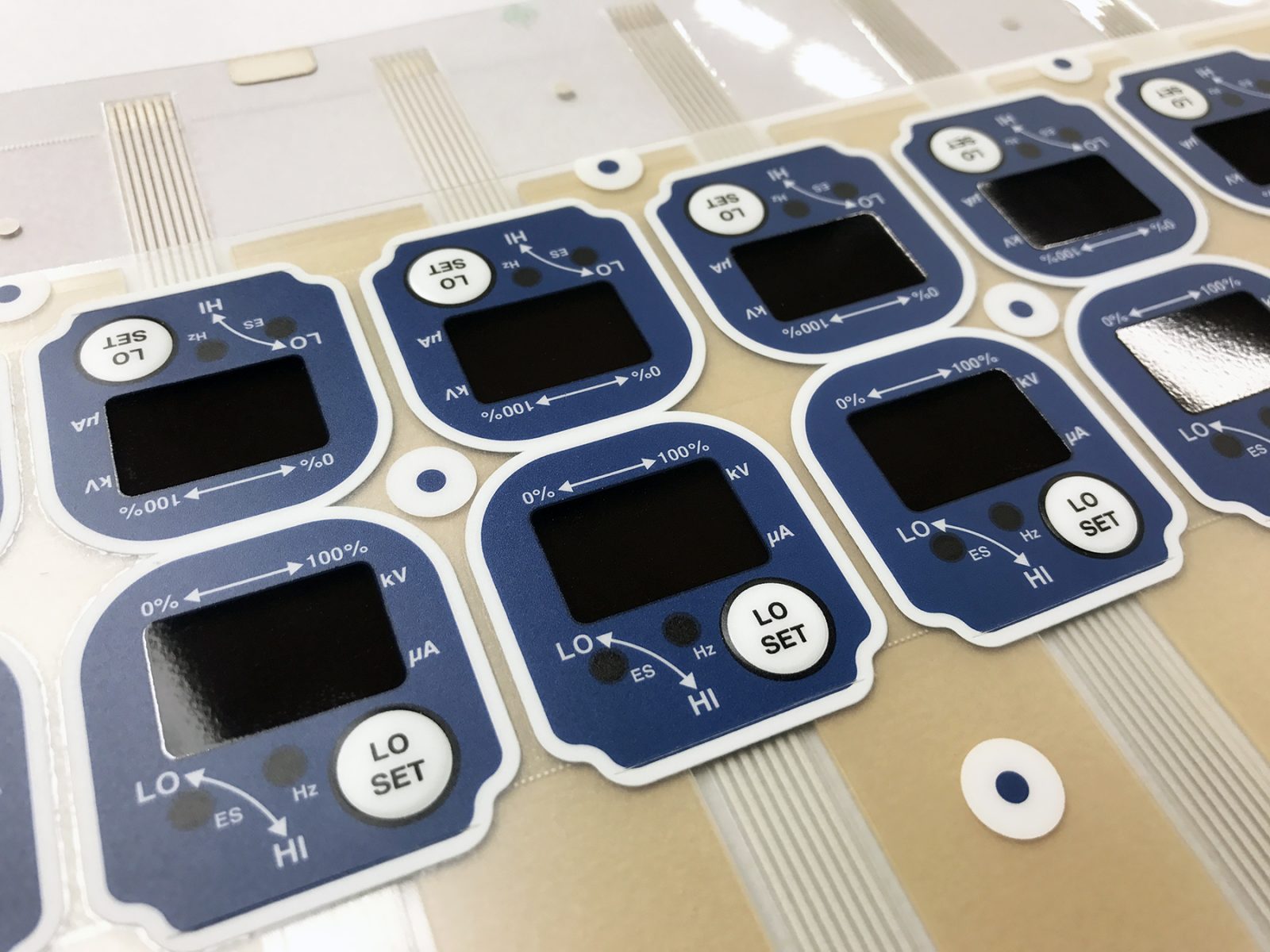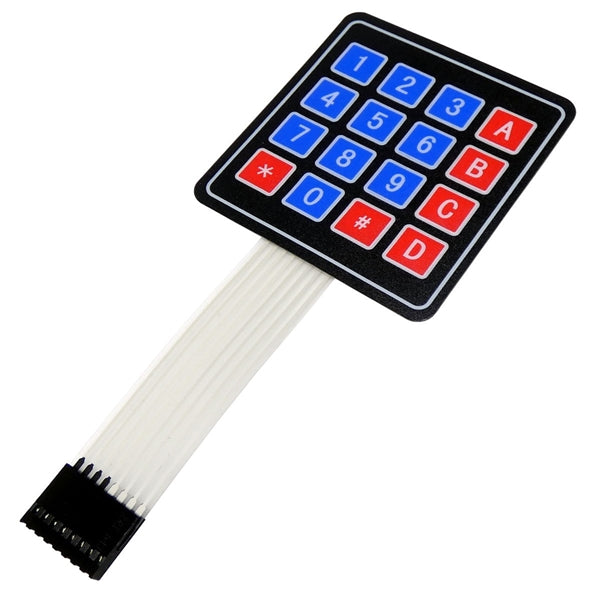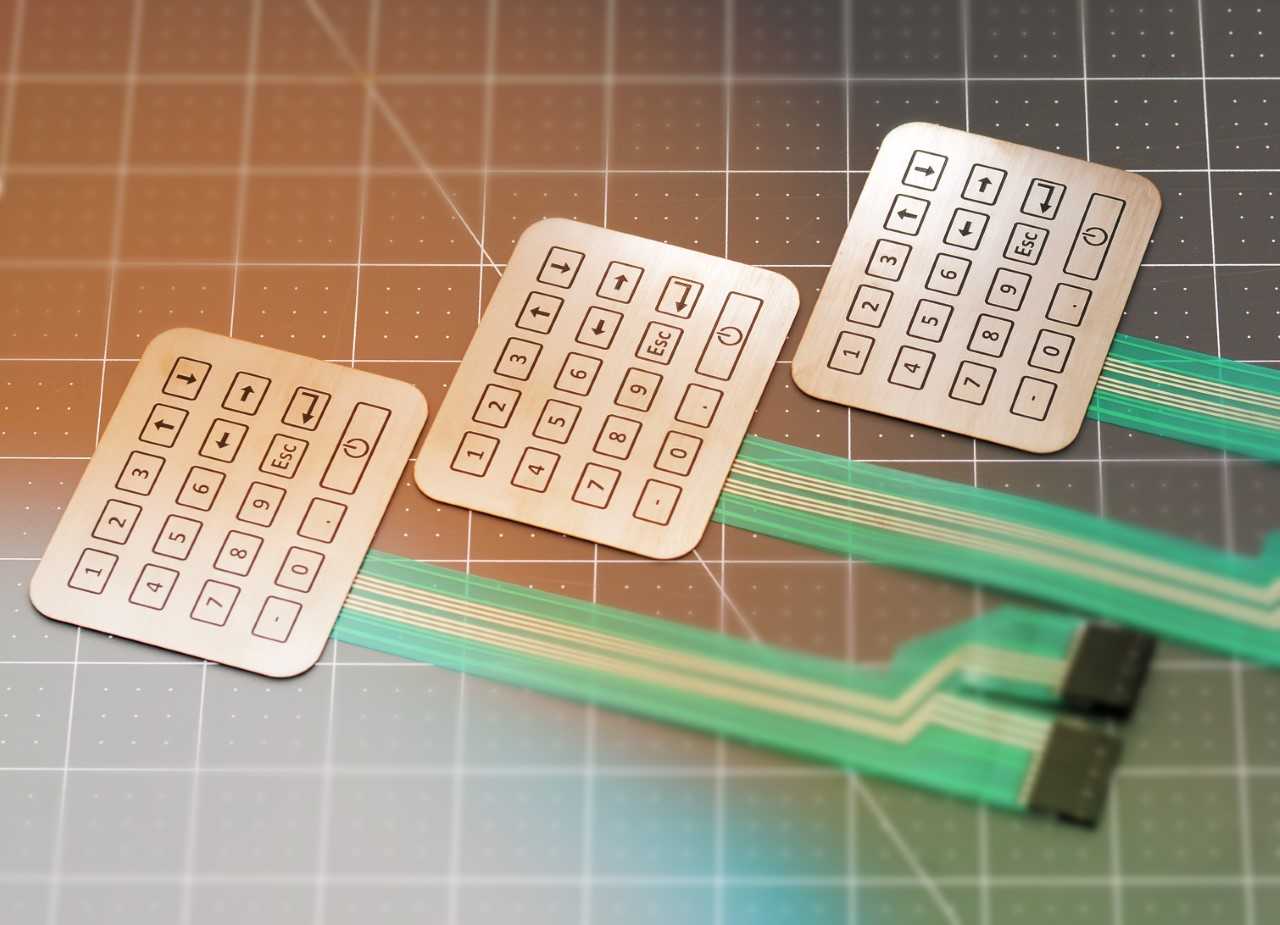An innovative membrane switch manufacturer can offer modern features and materials.
An innovative membrane switch manufacturer can offer modern features and materials.
Blog Article
What to Try to find When Picking a Membrane Layer Switch Over for Your Task
When you're picking a membrane layer button for your project, several crucial aspects come right into play. You'll require to assume concerning the materials, style, and exactly how well it straightens with your brand name.
Recognizing Membrane Layer Switch Components
When you plunge right into the world of membrane switches, it's vital to comprehend the key parts that make them operate. The switch typically contains 3 primary layers: the graphic overlay, the spacer layer, and the circuit layer. The visuals overlay gives the visual user interface, showing buttons and symbols you require for simple navigation. Underneath that, the spacer layer warranties there's sufficient distance in between the circuit and the overlay, allowing the switch to turn on without continuous pressure.
Recognizing how these layers work together helps you select a membrane button that's reputable and fits your task demands. Pay close focus to the thickness and material of each layer, as these elements influence sturdiness and performance in different atmospheres.
Material Selection and Its Influence
Selecting the right products for your membrane layer switch can considerably affect its efficiency and durability. The choice of substrate, generally polyester or polycarbonate, influences resilience and adaptability. Polyester is much more abrasion-resistant, while polycarbonate provides better quality and toughness.
Next, take into consideration the adhesive. It requires to stand up to environmental elements like moisture and temperature level modifications. A strong glue assurances that your membrane button stays intact over time.
Do not forget about the graphic overlay. The printing technique used, whether silkscreen or digital, affects the button's aesthetic appeals and long life. High-grade inks will resist fading and scratching, preserving a professional appearance.
Last but not least, believe concerning environmental problems. If your gadget will be revealed to severe chemicals or severe temperature levels, choose materials made to withstand these challenges. Your selections in materials will ultimately determine the button's dependability and user fulfillment.
Design Factors To Consider for Individual Experience
Picking the appropriate materials lays the foundation for a successful membrane layer button, however the design likewise plays a significant duty in user experience. You'll want to assess how the design influences functionality (membrane switch manufacturer). Maintain buttons and icons user-friendly and well-spaced, making it easy for customers to browse without confusion

Shade and contrast are likewise crucial; guarantee that your style is visually attractive however still useful. High contrast helps users quickly determine switches, specifically in low-light conditions.
Finally, show on the general aesthetic. A smooth and modern layout can elevate user perception and make your product much more attractive. Stabilizing functionality with an appealing style will certainly bring about a far better user experience and eventually, a much more successful product.

Ecological Aspects and Longevity
When selecting a membrane layer button, you require to take into consideration exactly how it'll do in different atmospheres. Elements like temperature resistance, dampness and chemical direct exposure, and mechanical wear can substantially influence its resilience. Comprehending these components will help you pick a button that withstands your specific problems.
Temperature Level Resistance Requirements
As ecological problems can differ commonly, recognizing temperature level resistance is crucial for ensuring the durability of your membrane layer switch. You need to review the temperature level array in which your gadget will run. Heats can trigger products to break down, causing failing, while reduced temperature levels might make parts breakable and prone to fracturing. See to it to check the requirements of the materials used in the button, like the adhesive and overlay, as they straight impact efficiency. It's also sensible to consider possible temperature variations and their impacts on the switch's integrity. By picking a membrane button with sufficient temperature level resistance, you'll enhance its life-span and maintain performance in challenging atmospheres. Pick carefully to stay clear of costly substitutes down the line.

Moisture and Chemical Exposure
Wetness and chemical exposure can significantly affect the performance and longevity of your membrane layer button, so it's vital to comprehend the environment in which it will be made use of. Always speak with the manufacturer's requirements for chemical compatibility to ensure your membrane button keeps its performance over time. By prioritizing dampness and chemical resistance, you can improve the sturdiness of your switch in difficult environments.
Mechanical Damage
While you might prioritize attributes like visual appeals and functionality in your membrane button, mechanical wear and tear can substantially impact its efficiency over time. Take into consideration just how commonly the switch will be used and the setting it'll be in. Frequent pushing can lead to deterioration of materials, triggering concerns like responsive comments loss and even switch failure. Search for models with robust layouts, such as those with protective overlays that withstand scrapes and wear. Furthermore, look for specifications on cycle life, which indicates the amount of presses the switch can deal with prior to revealing indicators of wear. Choosing a long lasting switch assurances long life and reliability, stopping costly substitutes and downtime in your project. Always consider durability together with appearances and functionality for peak performance.
Customization Options for Branding
When it concerns branding your membrane layer switch, customization alternatives are essential. You can select style aspects and colors that reflect your brand, along with particular logo placement and dimension to improve presence. In addition, choosing the ideal materials and appearances can raise the general look and really feel, making your product attract attention.
Layout Elements and Shades
A vast variety of design elements and shades can make your membrane switch not simply practical however additionally visually enticing, boosting your brand identification. When selecting colors, think of your brand name's palette; they ought to reverberate with your target market and stimulate the right feelings. You can also discover different surfaces like matte or shiny to produce different visual effects. Don't forget textures; including a responsive component can enhance individual experience and make your switch stand out. Consider incorporating custom graphics or patterns that align with your brand name message. By thoughtfully choosing design aspects and colors, you not only develop a product that looks excellent yet also reinforces your branding consistently and successfully.
Logo Positioning and Size
After settling your design elements and shades, the next action is to concentrate on logo positioning and dimension. Your logo design is an essential aspect of your branding, so you'll want it to stick out without frustrating various other layout aspects. Mirror on where your logo will be most visible and impactful; common positionings include the leading or facility of the button.
Don't fail to remember to ponder how the logo design aligns with user interaction. This attention to detail will boost both performance and brand identification in your job.
Material and Appearance Alternatives
Picking the ideal materials and textures for your membrane layer switch can greatly boost both its performance and aesthetic allure. You'll want to assess options like polyester or polycarbonate, as they supply longevity and resistance to use. The texture of the surface area likewise plays an important duty; smooth surfaces provide a blog here streamlined look, while distinctive Read Full Article surface areas can enhance hold and responsive comments.
Tailoring the materials and textures permits you to reflect your brand name identity properly. As an example, you could pick a matte surface to convey elegance or a shiny seek a modern-day touch - membrane switch manufacturer. Don't neglect regarding color alternatives, as dynamic tones can make your switch stand out, while soft tones can create a much more sophisticated look
Price vs. Quality: Discovering the Right Equilibrium
When you're managing the choices for membrane layer buttons, balancing cost and high quality can really feel frustrating. You want to guarantee that you're getting a reliable product without breaking the financial institution. Start by determining your task's details requirements. Are you prioritizing toughness or aesthetics? A lower-cost switch may save you money upfront, however if it jeopardizes performance, you can deal with greater substitute expenses later on.
Search for makers that offer a good mix of cost and high criteria. Research their credibility and client testimonials to gauge dependability. Occasionally, spending a little bit much more in top quality materials can save you from future migraines.
Likewise, think about the long-lasting performance and warranty alternatives. A somewhat much more expensive button with a strong service warranty could confirm to be a smarter financial investment. Eventually, it's regarding discovering that wonderful area where you meet your budget while ensuring your job's success.
Checking and Top Quality Guarantee Protocols
While you may discover the ideal membrane layer button style, guaranteeing its high quality with extensive testing methods is necessary for long-lasting success. Beginning by confirming that the manufacturer adheres to industry standards, such as IPC/WHMA-A -620, to ensure a reliable item. membrane switch manufacturer. You'll intend to check for thorough screening techniques, consisting of environmental, mechanical, and electrical assessments
Make sure the buttons undergo longevity testing, replicating real-world use to determine any prospective failings. Focus on the manufacturer's quality control procedure, which must include regular examinations and audits.

Do not fail to remember to request for samples and conduct your own examinations to confirm compatibility with your job. anchor Ultimately, take into consideration how typically the maker updates their procedures; technology in screening can lead to enhanced high quality. By prioritizing these screening and top quality assurance procedures, you'll raise the likelihood of an effective and sturdy membrane layer button for your application.
Often Asked Concerns
How Long Does a Membrane Layer Switch Over Commonly Last?
A membrane layer switch usually lasts anywhere from 1 to 10 million cycles, depending upon usage and ecological aspects. You'll desire to consider your particular requirements to assure it meets your long life needs successfully.
Can Membrane Changes Be Fixed if Harmed?
Yes, you can often repair membrane switches if they're harmed, however it commonly relies on the degree of the damage. Minor issues may be fixable, while a lot more substantial damages normally needs substitute for correct capability.
What Are the Usual Applications for Membrane Layer Switches?
Membrane buttons are typically utilized in devices, medical gadgets, and auto controls. You'll discover them in customer electronics, commercial devices, and even gaming consoles. Their convenience makes them suitable for different interface and settings.
Exist Particular Certifications for Membrane Layer Buttons?
Yes, there are particular qualifications for membrane switches. Seek UL, CE, and RoHS certifications to assure safety and conformity. These accreditations show the switch satisfies sector standards for quality and ecological safety and security.
How Do I Make Sure Correct Installation of a Membrane Change?
To assure correct installation of a membrane button, clean the surface thoroughly, straighten it thoroughly, and apply even stress. Follow maker guidelines for adhesive curing time to maximize toughness and functionality.
Final thought
When selecting a membrane layer switch for your job, maintain these vital elements in mind: focus on durable products, focus on user-friendly layout, and think about customization for your brand. By thoroughly reviewing these aspects, you'll ensure your membrane layer button not just meets your project requires yet also improves individual experience and shows your brand identity properly.
Report this page